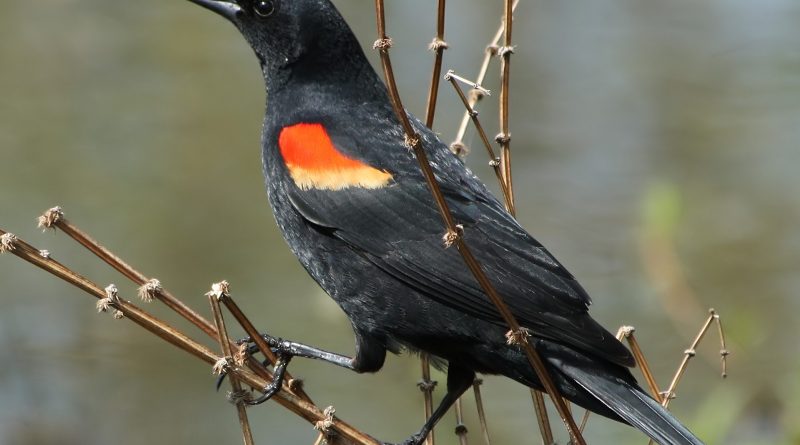Prepare for the season of red-winged blackbirds.
Learn more about the red-winged blackbird, a black bird with red and yellow wings that makes a springtime comeback to backyards. Discover their call, eggs, and more.
Agelaius phoenicus is the scientific name given to the red-winged blackbird by Swedish scientist Carolus Linneaus in 1766. The Greek words for flocking and crimson are the source of the name. Here is all the information you require on red-winged blackbirds.
One of the most common birds in North America is the red-winged blackbird, or RWB for short. This is seen in the early spring when the glossy black males stake out territory close to bodies of water and make loud cries to drive competitors and intruders—occasionally even humans—away. They spread their wings to show off their red-and-yellow shoulder insignia as they protect their home base.
Calls made by red-winged blackbirds are loud and piercing. Men make a full-throated conk-la-ree to declare their territory. Doctoral student at the University of Illinois at Urbana-Champaign Sarah Winnicki thinks the sound is reminiscent of a “wetland on an early spring morning.”
What’s the Appearance of a Male Red-Winged Blackbird?
Males have wing epaulettes that are vivid red and yellow and are nearly entirely black. The distinctively bright wing feathers of males vary over their wide range. The golden stripe that many other male birds have is absent in the birds that breed in California and Mexico.
Forget about mating forever. These species’ males cannot get married. Up to 15 females can mate with top males. According to Sarah, “Males that are particularly robust and competitive may control more resources than lower-quality males, perhaps allowing them to acquire both more food and more partners.”
The Appearance of a Female Red-Winged Blackbird
While mostly directed at other females, the smaller, streakier brown females also make scolding cries. You might not be aware that they belong to the same species as the males in black and red.
Also Read- Black-billed Magpie: The Ideal Blend of Intelligence and Beauty
Eggs with a Nest
Females construct deep, cup-shaped nests lined with dried grasses near the marsh’s surface. Three to four light blue-green eggs with black markings are often found in nests. Every year, a female produces one or two broods.
Red-Winged Blackbird juveniles
Hatchlings appear in less than two weeks. Although though they have two weeks before they can fly, by day six or so, they have enough feathers to stay warm. Should they fall out of the nest and into water, the young also have the power in their wings and feet to swim. According to Sarah, “researchers have seen young blackbirds swimming until they can reach a neighbouring cattail or building and get out of the water.”
Juveniles have striped dark brown feathers and frequently hop along the ground as their parents look for food.
If a young red-winged blackbird is at an intermediate stage that isn’t described in field guides, it may be difficult to identify it. The juvenile brown-striped plumage of this young bird (above) is changing into the black of the adult male. The extremely pointed beak, pale eyebrow (similar to that of the adult female), and pale buff-orange at the bend of the wing, just below the shoulder, are all telltale signs. This bird will be simpler to identify in a few weeks when it turns all black with a band of red and yellow on the shoulder.
Migration of Red-Winged Blackbirds
As red-wings migrate, females leave their overwintering grounds up to a month before males do and return up to a month later. Most northern groups move quite far south; some go up to 800 kilometres. Most populations in the South and some in the West stay put during the winter.
Red-winged blackbirds exclusively migrate during the day, which Sarah believes may make it easier for them to find stopover habitats, stay with their flock, and avoid the dangers of night migration. They won’t be as easily confused by artificial lighting and will be able to identify harmful things like buildings and wind turbines that are in their way, according to Sarah.
When they require the extra nutrients during migration, they frequent feeders.

